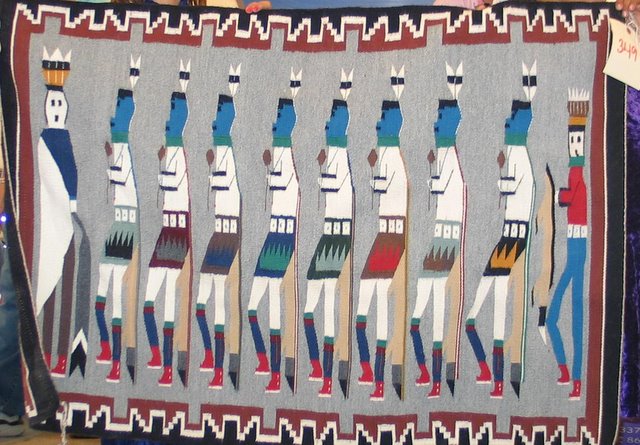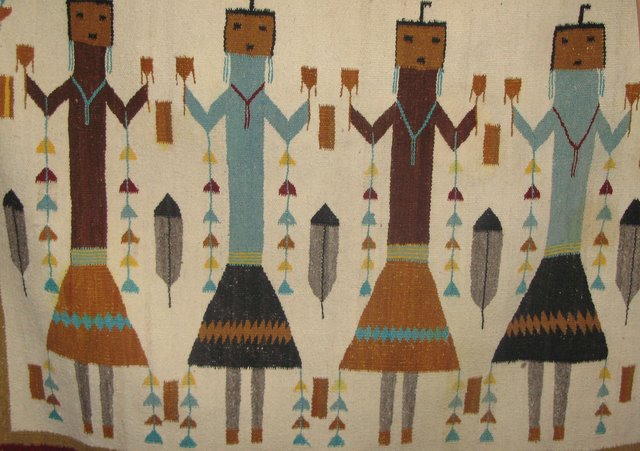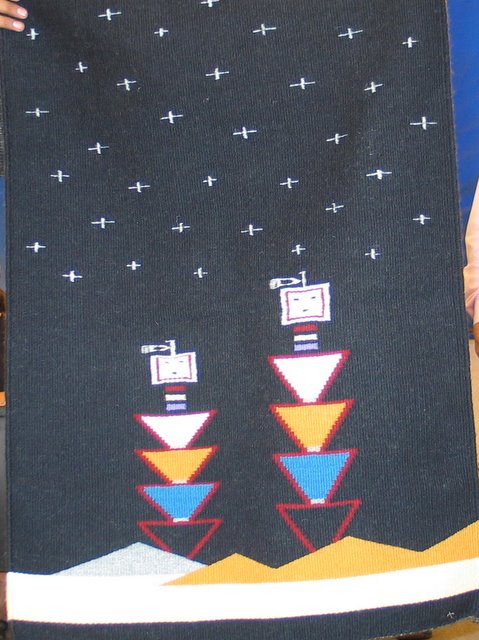Ye’i and Ye’i Bi Chei Weavings
Above: A 1950’s handspun Shiprock Ye’i dyed with vegetal and aniline colors
People who aren’t familiar with Navajo weaving often confuse Ye’i and Ye’i Bi Chei weavings. The Ye’i design depicts the Diyiin Diné’é (Holy People) directly and they are always shown facing the viewer and are often surrounded on three sides by a Rainbow Ye’i. Ye’i figures with angular heads are female while those with rounded heads are male.
A Ye’i Bi Chei weaving depicts participants in an event, people who are assuming the dress and function of the Ye’i for the purpose of a healing Nightway ceremony popularly called a Ye’i Bi Chei Dance. This design shows the figures in profile as you can see in the example below (photo courtesy of Doren Indritz). The dancers wear kilts, traditional moccasins, foxtails and blue masks. The medicineman or hatałi stands at the left and the figure at right is a clown called a water sprinkler. Ye’i Bi chei rugs can also show the patient and female as well as male dancers.

Both Ye’i and Ye’i Bi Chei weavings are considered taboo by many weavers, and weavers have ceremonies to protect themselves from back and vision problems that are said to be associated with weaving the designs. One of my friends paid $10,000 to have a protective ceremony but didn’t feel well once she started the weaving and decided to take down the rug and bury it.
The Ye’i and Ye’i Bi Chei design family includes many variations, some of them very contemporary. One of my favorites is called a Cloud People design by Regina Bia. As as far as I know, Regina is the only person who weaves it. A picture of one of Regina’s Cloud People weavings done in 2006 appears below courtesy of Doren Indritz. I like the spare uncluttered feel of the figures against the night sky.


